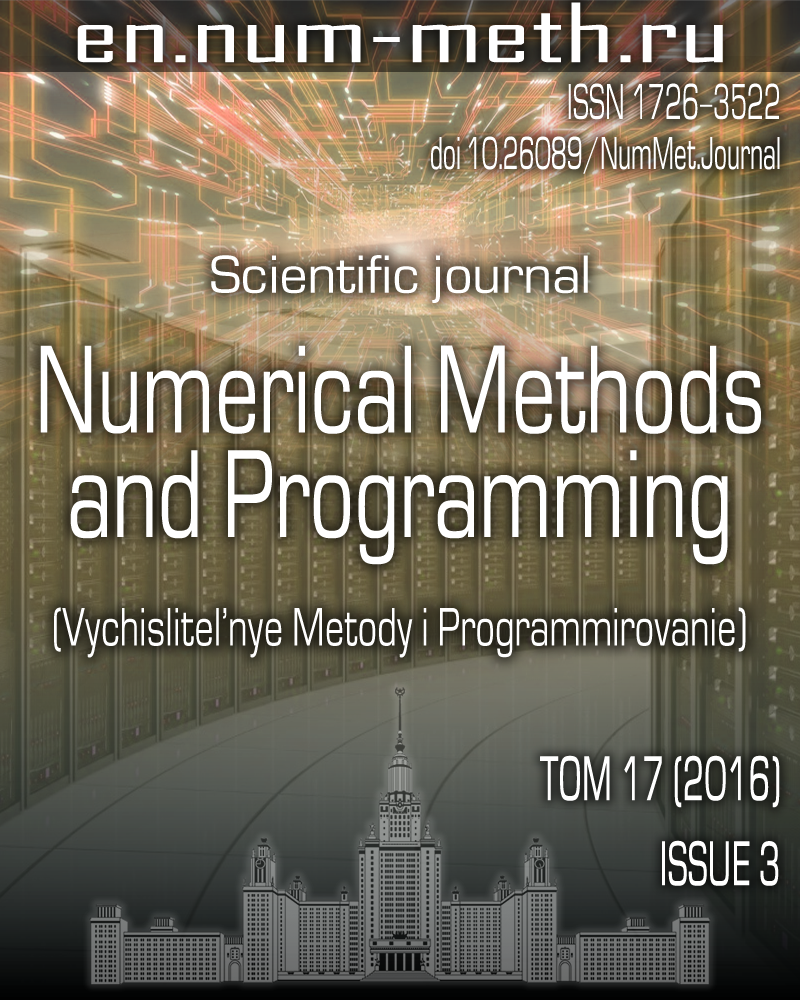DOI: https://doi.org/10.26089/NumMet.v17r319
Solution of a model inverse spectral problem for the Sturm-Liouville operator on a graph
Keywords:
spectral theory of differential operators
geometric graph
Sturm-Liouville operator
spectral problems
Abstract
A model inverse spectral problem for the Sturm-Liouville operator on a geometric graph is studied. This problem consists in finding N parameters of the boundary conditions using its N known eigenvalues. It is shown that the problem under consideration possess the property of a monotonic dependence of its eigenvalues on the parameters of the boundary conditions. This problem is reduced to a multiparameter inverse spectral problem for the operator in a finite-dimensional space. A new algorithm for the numerical solution of this problem is proposed.
Published
2016-05-22
Issue
Section
Section 1. Numerical methods and applications
References
- N. F. Valeev, “The Multiparameter Inverse Spectral Problems for Finite-Dimensional Operators,” Ufimsk. Mat. Zh. 2 (2), 3-19 (2010).
- N. F. Valeev, S. A. Rabtsevich, and E. R. Nugumanov, “About the Problem of Identification of the Sturm-Liouville Operator’s Boundary Conditions by the Spectrum,” Sistemy Upravl. Inform. Tekhnol., No. 3, 9-12 (2009).
- G. М. L. Gladwell, Inverse Problems in Vibration (Kluwer, Dordrecht, 2004; Inst. Komp’yut. Issled., Izhevsk, 2008).
- Yu. V. Martynova, “Model Inverse Spectral Problem for Sturm-Liouville Operator on Geometrical Graph,” Vestn. Bashkir Univ. 16 (1), 4-10 (2011).
- Yu. V. Pokornyi, O. M. Penkin, V. L. Pryadiev, A. V. Borovskikh, K. P. Lazarev, and S. A. Shabrov, Differential Equations on Geometric Graphs (Fizmatlit, Moscow, 2005) [in Russian].
- V. A. Sadovnichii, Ya. T. Sultanaev, and N. F. Valeev, “Multiparameter Inverse Spectral Problems and Their Applications,” Dokl. Akad. Nauk 426 (4), 457-460 (2009) [Dokl. Math. 79 (3), 390-393 (2009)].

